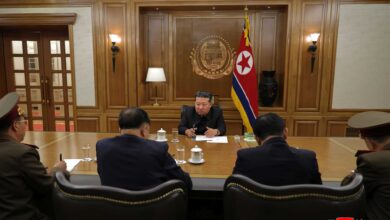One day in January 1952 when the Fatherland Liberation War was at its height, President Kim Il Sung summoned a health official. On his table lay a document about the germ warfare perpetrated by the enemy and the countermeasure against it submitted by the officials concerned sometime ago. The leader who had been looking over the paper for a long time with a serious face asked the official how much the people were charged for the doctor’s fee.
This unexpected question confused the official who had been thinking the President would give his views on the document. So he remained dumb for a moment before he answered that the workers and office clerks were given free medical care under the social insurance programme of the state while the peasants and private merchants and industrial entrepreneurs were charged a very small fee for medical treatment and the dependents of workers and office employees were paying about 40 percent of the outpatient’s bill.
At this, the President said that the people were fighting for victory in the war at the front and in the rear at the risk of their lives and that nothing should be spared for such patriotic self-sacrificing people. Then he proposed to adopt a free medical service system for the entire people. As a result, the Cabinet decision about the introduction of a universal free medical service system was announced in November 1952. The introduction of such a system in a hard war time when every penny was needed for conducting the war surpassed all imagination of people.

